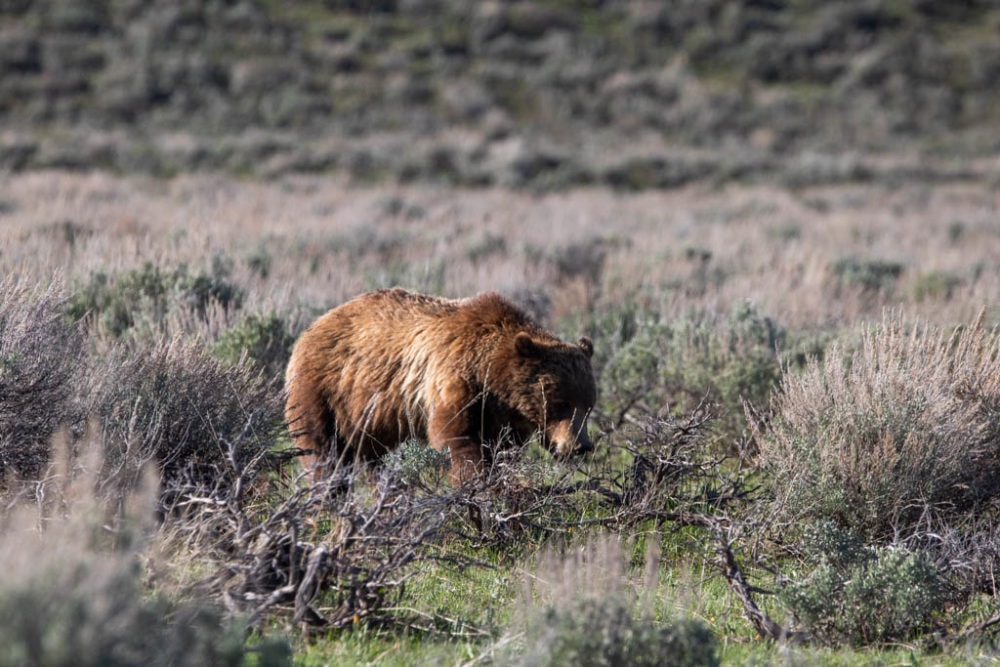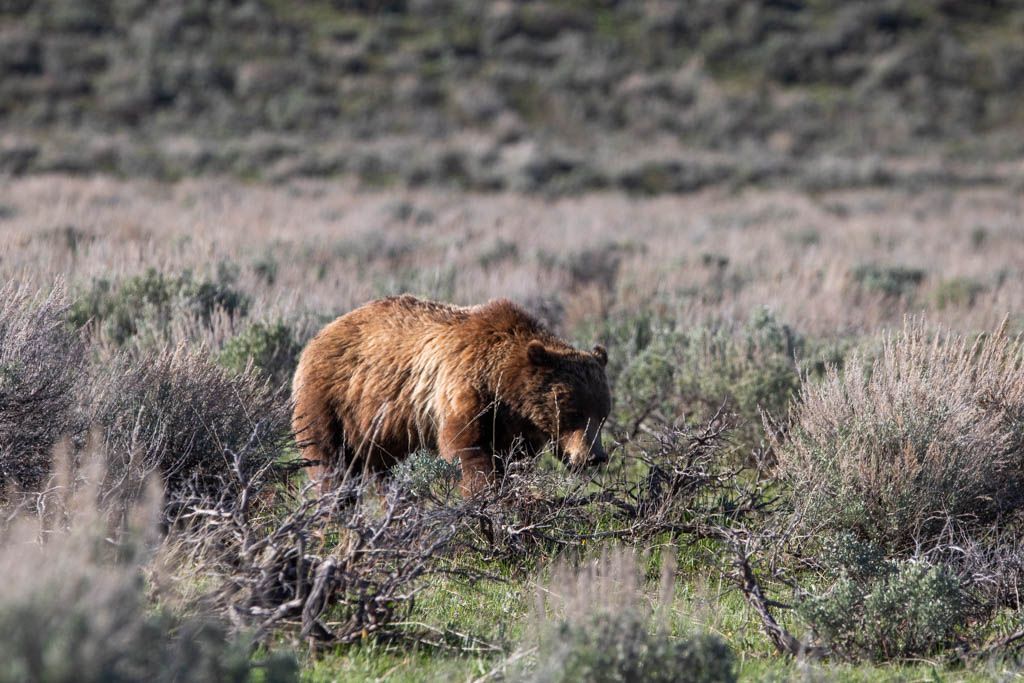Grizzly Bear Season Has Begun in Grand Teton National Park
This news story about the first grizzly bears emerging from their den in Grand Teton National Park is based on a March 14, 2022, National Park Service press release. You can read the original release here.
After nearby Yellowstone National Park reported its first grizzly bear sighting of 2022 last week, the grizzlies have now started to stir in Grand Teton National Park, too.
The National Park Service announced that Grand Teton’s first grizzly bear was spotted on Sunday, March 13. Park management encourages both visitors and locals “to secure attractants” now that the bears are emerging from hibernation.
Grand Teton Grizzly Bears Are Emerging From Hibernation
March is usually when adult male grizzlies begin emerging from their winter dens, while females with young cubs typically emerge between April and early May, the Park Service says.

When bears leave their den after a months-long winter rest without food, they’re famished and frantically search for anything they can eat. This often includes the scavenging of carcasses of animals that didn’t survive the winter.
During this period of scavenging, a time when other fresh food sources are still very scarce, grizzly bears can display extremely aggressive behavior towards other bears and humans. Especially when feeding on a carcass, grizzlies are at their most dangerous.
“Bear season has begun, how it ends depends on all of us,” said Grand Teton National Park Superintendent Chip Jenkins.
“We welcome the community led effort to work across boundaries to protect bears in Jackson Hole, and we need everyone’s help to remove unsecured attractants from the valley.”
Tips For Local Residents
As the grizzly bear population continues to expand in the southern end of the Greater Yellowstone Ecosystem, bears continue to disperse outside of Grand Teton National Park. Visitors and local residents should secure all attractants so bears cannot gain access.
The National Park Service advises local residents and park visitors to following these guidelines:
- Store all garbage within bear-resistant containers.
- Secure livestock feed, pet food, compost, and beehives.
- If you feed birds during the non-denning season, hang birdfeeders in a way that makes them inaccessible to bears.
- Help your neighbors create a bear-wise community to protect wildlife.
Once a bear receives a human food reward, it can become food conditioned. Over time, food conditioned bears may become bold or aggressive in their attempts to obtain human food.
It may be cliché, but unfortunately, more often than not, “a fed bear is a dead bear.”
For more information and helpful tips about how to do your part to protect bears, please visit the Interagency Grizzly Bear Committee’s Residents webpage and the Wyoming Game and Fish Department’s Living in Bear Country webpage.
Grizzly Bear Safety in Grand Teton National Park
Encounters with both black bears and grizzly bears can occur anywhere and at any time within Grand Teton National Park.
While recreating in the park, follow these guidelines:
- Be alert and watch for bears, fresh tracks, or scat.
- Make noise, especiallyin areas with limited visibility or when sound is muffled.
- Carry bear spray, know how to use it, and keep it readily available.
- Hike and ski in groups of three or more people.
- Do not run, back away slowly if you encounter a bear.
Federal regulations require you to stay at least 100 yards away from bears and wolves and 25 yards from all other wildlife. Park management ask that visitors report any bear sightings inside the park to the nearest ranger.
Read this blog post for more information about grizzly bear safety. See where you can see grizzlies in Grand Teton here, and learn how to properly use bear spray here.







